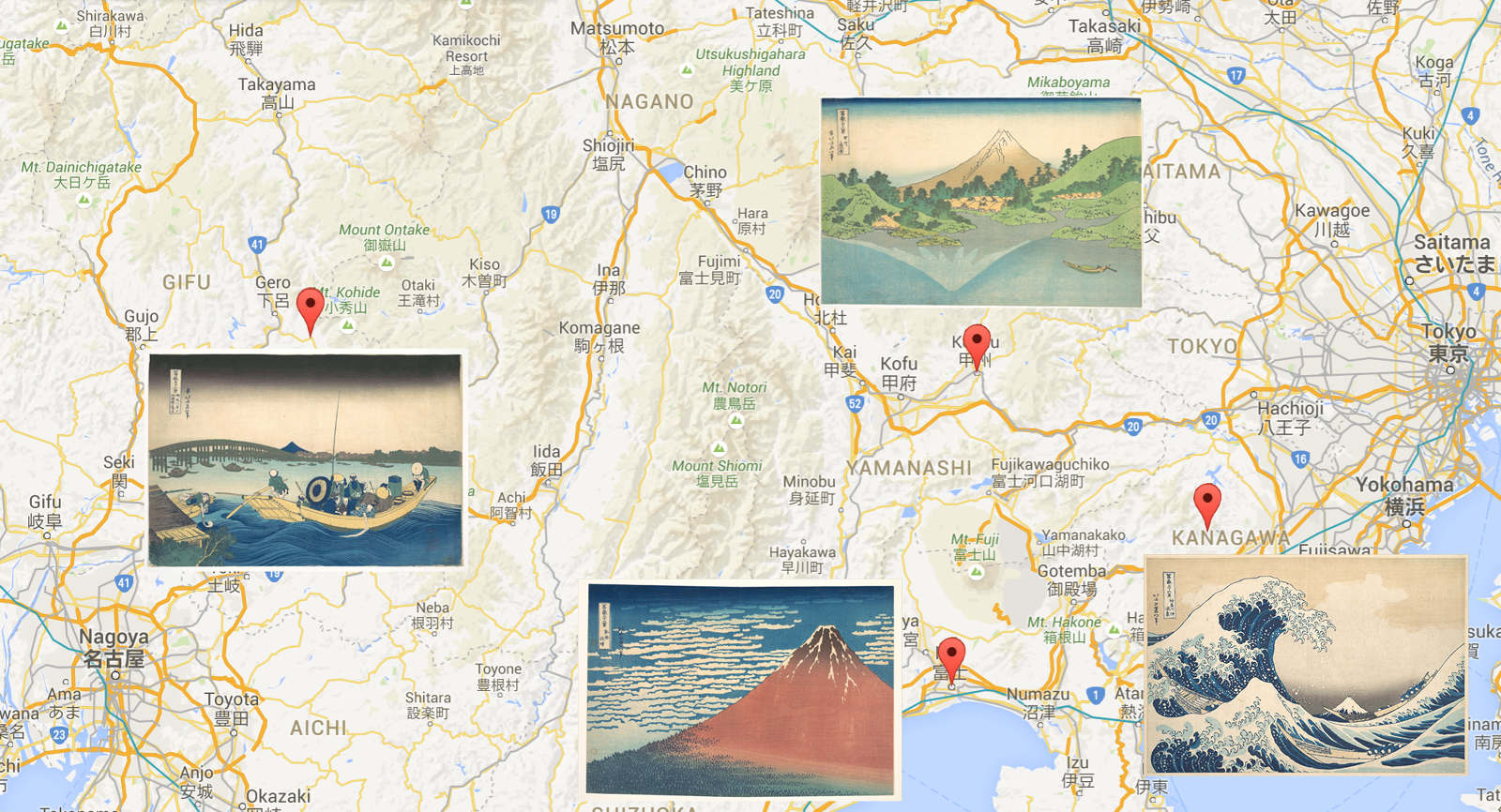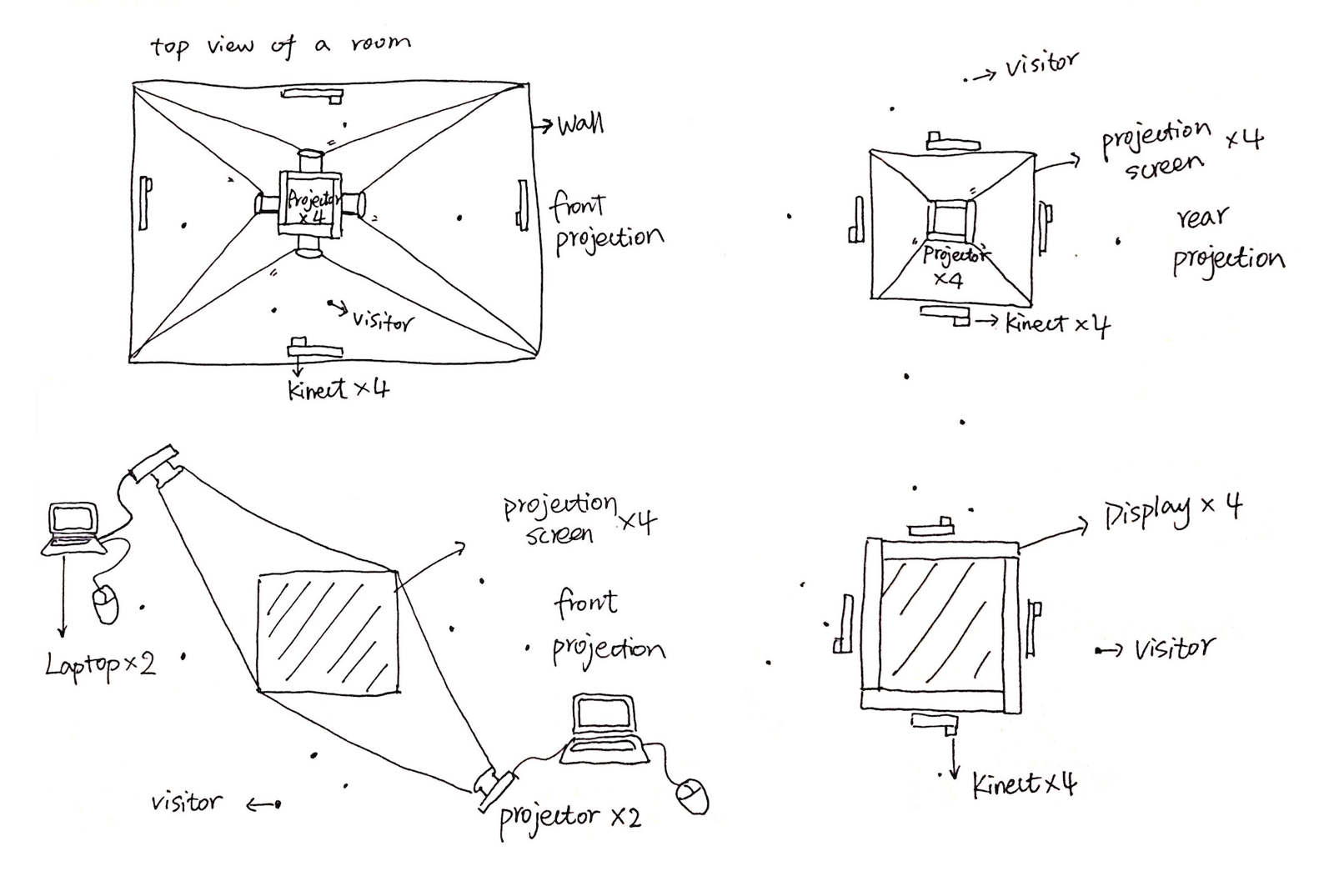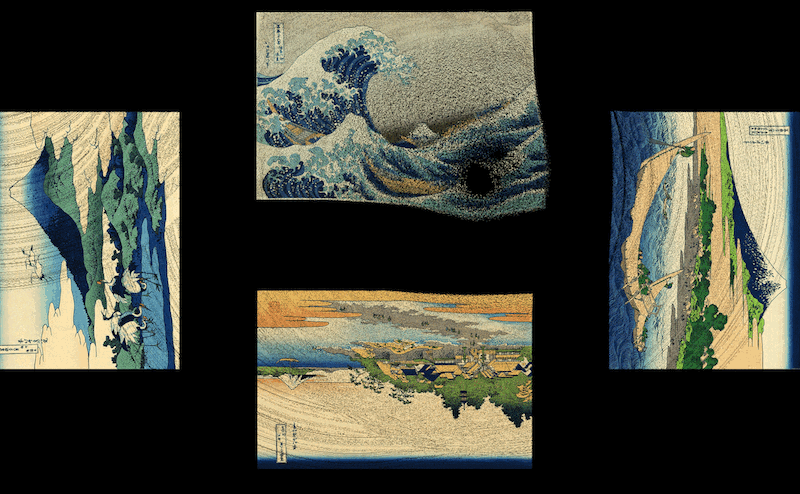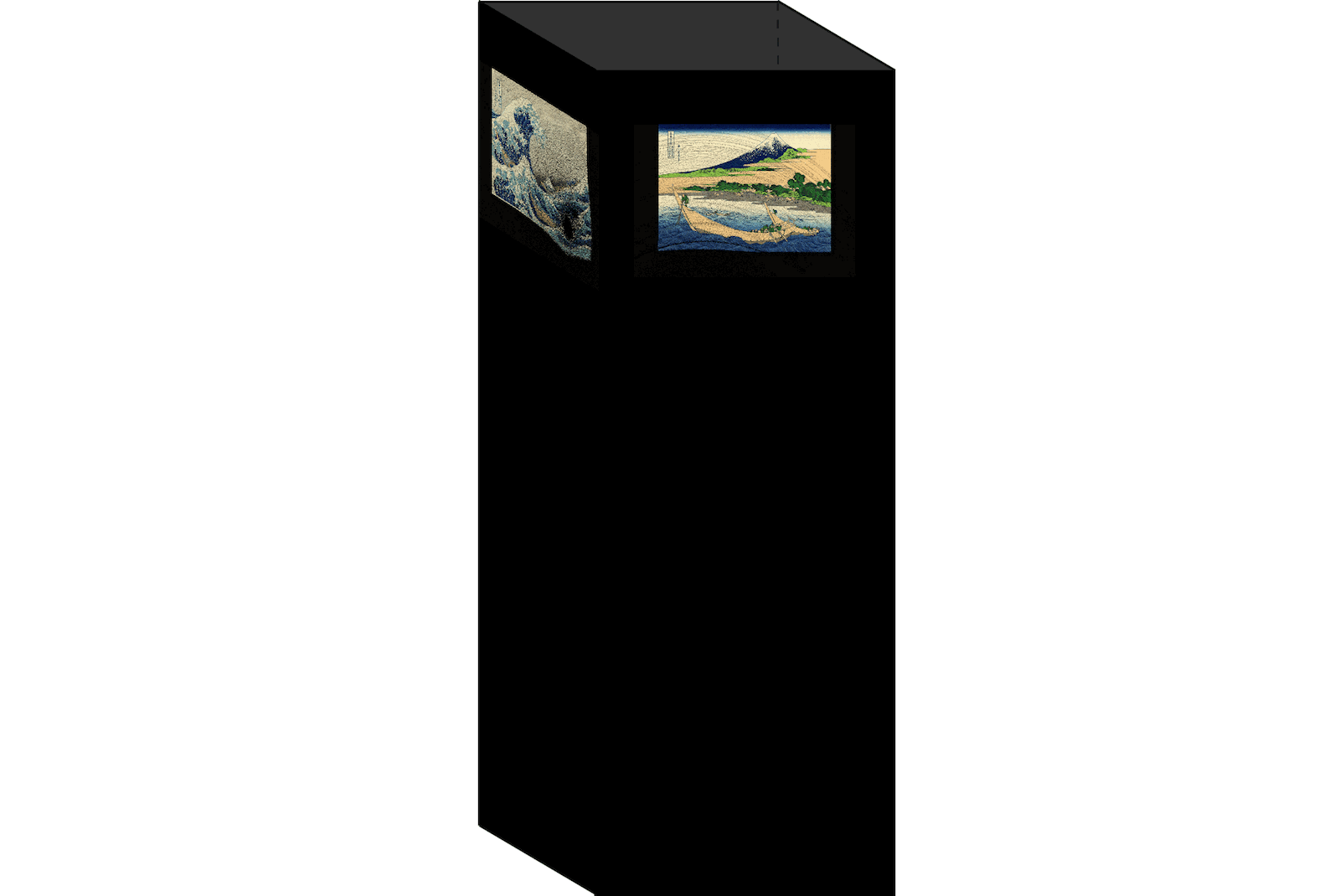Exhibited in MET EXPO 2015.
The Great Wave Caprice hopes to explore new way of appreciating paintings in the museums. It intends to bring a different experience by making use of a series of paintings of Mount Fuji in different perspectives to recreate a 3D interactive sculptural projection in compared with the original pieces.
Among over 6 million visitors to Metropolitan Museum of Art every year, most of them are beginners or amateurs to the world of art. During six months of observation, I found many of them got more attracted to sculptures than paintings since they can walk around and look through different angles. There are artists who stare at specific paintings for a whole day, but for others, why a painting is famous may not seem inviting as if it is famous.
I was very thrilled when the staff introduced us the technology to conduct research on woodblock paintings for better protection and display. Among these paintings, I can’t take my eyes from The Great Wave. The wave seemed alive to me, and the Mount Fuji balanced the wave so well as if it’s very close to us. That very moment reminded me of the intention of my previous project “Interactive Image” - to make image alive.
As I got to know more of this painting, I fount out The Great Wave is only one among thirty-six views of Mount Fuji, and some of the rest also depict life on rivers or lakes around Mount Fuji.
What if I put these paintings on four sides so people can appreciate this series while they are walking around as if there is a real Mount Fuji in the center, at the same time they can interact with these paintings to create waves on top of waves?
To think about how to achieve this goal, my head was filled with all kinds of possibilities and restrictions.
1.Four sides of paintings need four displays, either real display or projection. 2.If it’s real display, what could be the screen? How many displays? 3.If it’s projection, front or rear projection? What is the material for screen? How many projectors? 4.How can I achieve the interaction in four sides? 5.How much will these cost...
Multiple projectors or displays also increase the complexity and cost of other devices. If there could be a cool structure to make one projector possible, the interaction could be done via only one laptop as well. Everything else will be much easier to coordinate, and cost less of course.
BOOM! An upside down pyramid structure it is! This could help split one light beam into four directions to enable the display of four paintings on four sides. The pyramid structure also implies a real mountain in the center. In term of the screen, the tracing paper is way better than a rear projection screen in its feel and price. It also reminds people of the rice paper used in traditional Japanese architecture.
With the pyramid structure, the interaction can be done within one laptop screen by mouse hovering. Although it’s not as convenient as the Kinect detection, it reduces the amount of work to connect four Kinect devices with one laptop.
The Great Wave Caprice hopes to enhance visitors’ in-museum experience when they appreciate paintings. It creates an interactive physical projection that connects the original paintings in the help of digital technologies.







